When you select more than one language as the input language, the Language bar will be displayed either on the taskbar or desktop in Windows. If you wish to turn on or turn off the Input Indicator or Language Bar in Windows 11/10, then this post will show you how to do it. The post has been edited to mention the procedure for Windows 11/10 in the first half and then talks about Windows 8.1 in the latter half.
Turn Off Language Bar in Windows 11/10
How to disable Language Bar or Input Indicator in Windows 11
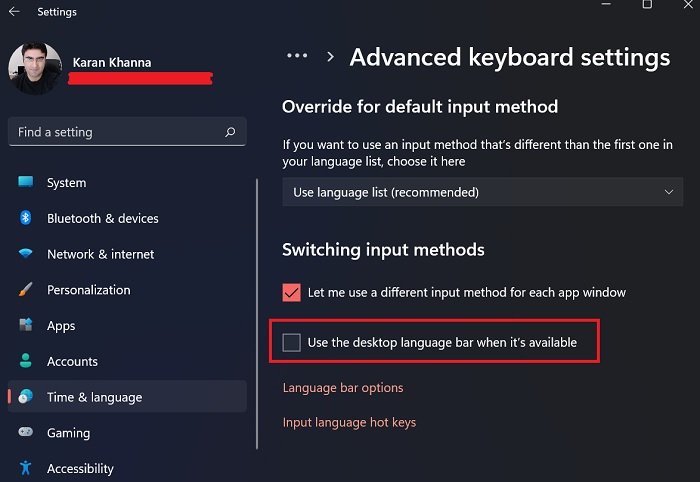
Adding more input languages in Windows 11 automatically invokes the language bar on the system. If you wish to turn Off the Language Bar in Windows 11, then the procedure is as follows:
- Right-click on the Start button and select Settings.
- Go to the Time & language tab on the list on the left-hand side.
- In the right pane, select Typing.
- Scroll down and click on Advanced Keyboard settings.
- In the Advanced Keyboard settings window, uncheck the box associated with Use the desktop language bar when it’s available.
- Reboot your system.
Language Bar & Input Indicator settings in Windows 10
In recent versions of Windows 10, to Turn Off Language Bar or Input Indicator, you need to do this.
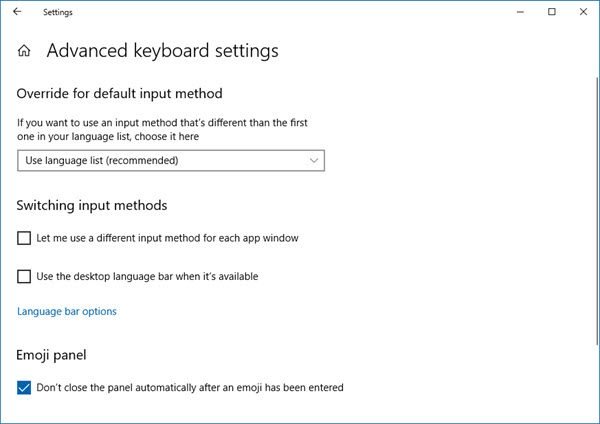
- Open Settings
- Select Devices > Typing
- Scroll down till you see More keyboard settings
- Click on Advanced keyboard settings to open the panel
- Here you will see the setting Use the desktop language bar when it’s available.
Clicking on language bar options will open the following window-
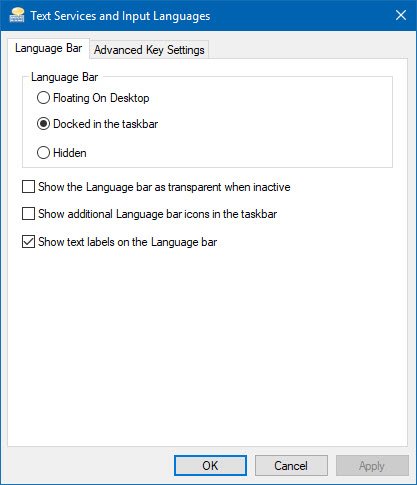
Make the choices as per your requirements.
To hide the ENG from the Taskbar, you can turn off the Input Indicator from Settings > Personalization > Taskbar > Notification area > Turn System icons on or off.

Do note that closing the Language bar will not uninstall or remove any languages from your Windows PC, it is only this option to easily switch between input methods, that is hidden or removed.
How to hide the Language Bar?
If you do not want to turn OFF the Language Bar but merely hide it or sideline it, then the procedure is as follows:
- Right-click on the Start button and select Settings.
- Go to the Time & language tab on the list on the left-hand side.
- In the right pane, select Typing.
- Scroll down and click on Advanced Keyboard settings.
- Click on the option for Language bar options.
- In the Language bar tab, you will find options to make it Hidden, Floating on Desktop, Transparent when inactive, etc.
Why is the option for the language bar under the Typing section instead of the Languages section?
Microsoft made significant changes to menus in Settings for the convenience and accessibility of Windows users. Since the option for the Language bar had to be clubbed with other similar options, it was placed in the Typing section and not otherwise.
In earlier versions of Windows 10 and in Windows 8.1 you had to do this:
From the WinX Menu, open Control Panel and click on the Language applet. Here it is assumed that you have more than one language as the input language. In my image, you will see English and Hindi.
Click on Advanced settings, that you can see in the left panel. The following will open. Under Switching inputs method, select Use the desktop language bar when it‘s available.
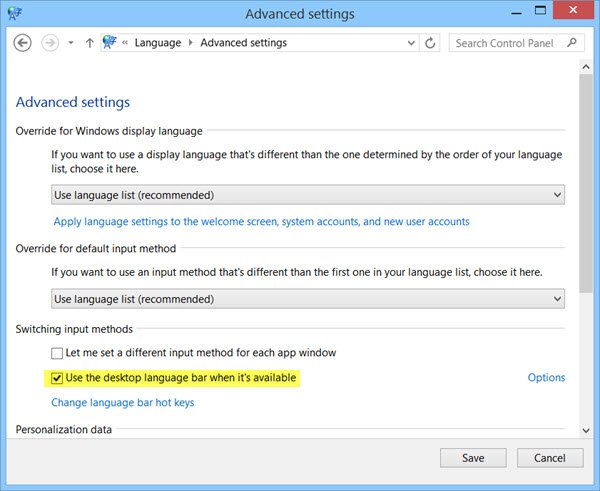
Once you have done this, click on the Options link in the same line. The Text Services and Input Languages settings box will open. Under the Language Bar tab, you will see the following three options for the Language Bar.
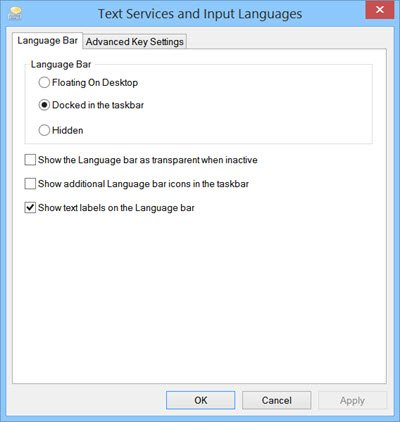
By default, the Language Bar appears as follows in the Taskbar.
When you select Floating on Desktop, you will see the following bar, which you can drag and place anywhere on your Windows desktop, according to your convenience.

If you select Docked in the Taskbar and also check the Show additional Language Bar icons in the taskbar, you will see it appear as follows:
![]()
When you select Hidden, the Language Bar will be hidden. To remove or turn off, simply uncheck the Use the desktop language bar when it‘s available setting.
There is another way to hide the ENG from taskbar
You may also right-click Taskbar > Properties > Taskbar and Navigation Properties > Taskbar tab. Click the Notification Area – Customize button.
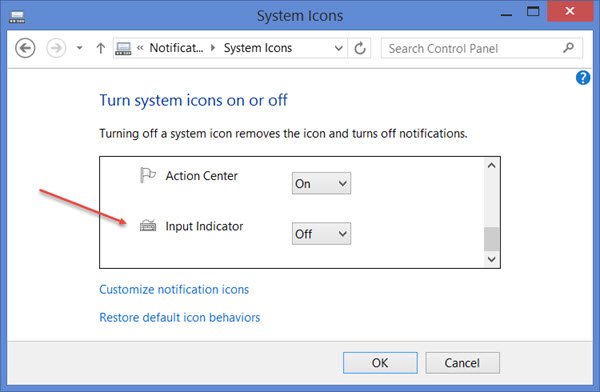
Next, in the new window which opens, click Turn system icons on or off. Now select the option Off for Input Indicator from the drop-down menu. Click OK and Exit.
Go here to troubleshoot if your Language Bar is missing.
How can I remove the Windows 8.1 default shortcut win + space for language switching?
u know what i though i must be hacked because i did what u said and i can see input indicator added again to task bar but i can see it as a empty place when i click on it it wont do anything :(
i hope you’re okay
Also check to make sure your region is correct.
every time i turn my pc on, it comes back on the taskbar. it just will not stay gone :( i dont think you was hacked, its just MS being its usual dictator self telling us what we can and cant do with out own PC’s
Excellent thread! Worked a charm and finally that silly language indicator is gone. Windows should leave some things alone. Was perfectly fine in Win 7/8. Anywho.. Thanks again!
All fine and well except today (May 2018), the Win 10 Control Panel no longer has the Language Aplet available for selection. Perhaps you could get someone to update this article so that it is compatibgle with latest versions of Windows?
Thanks, been bugging me since it popped up in my taskbar a few days back.